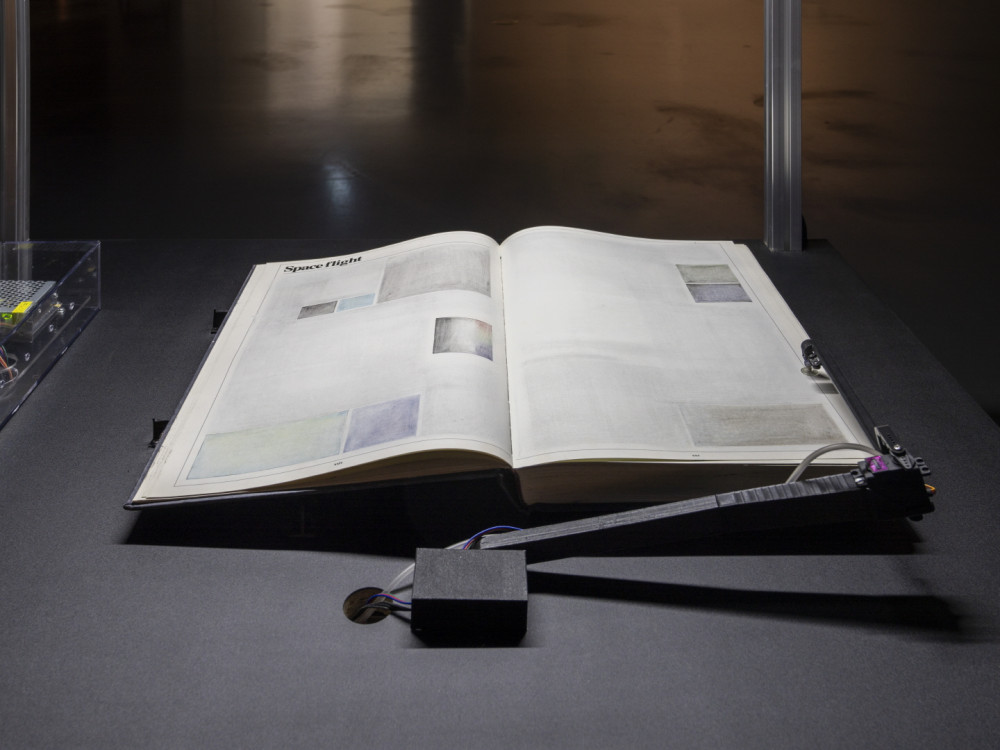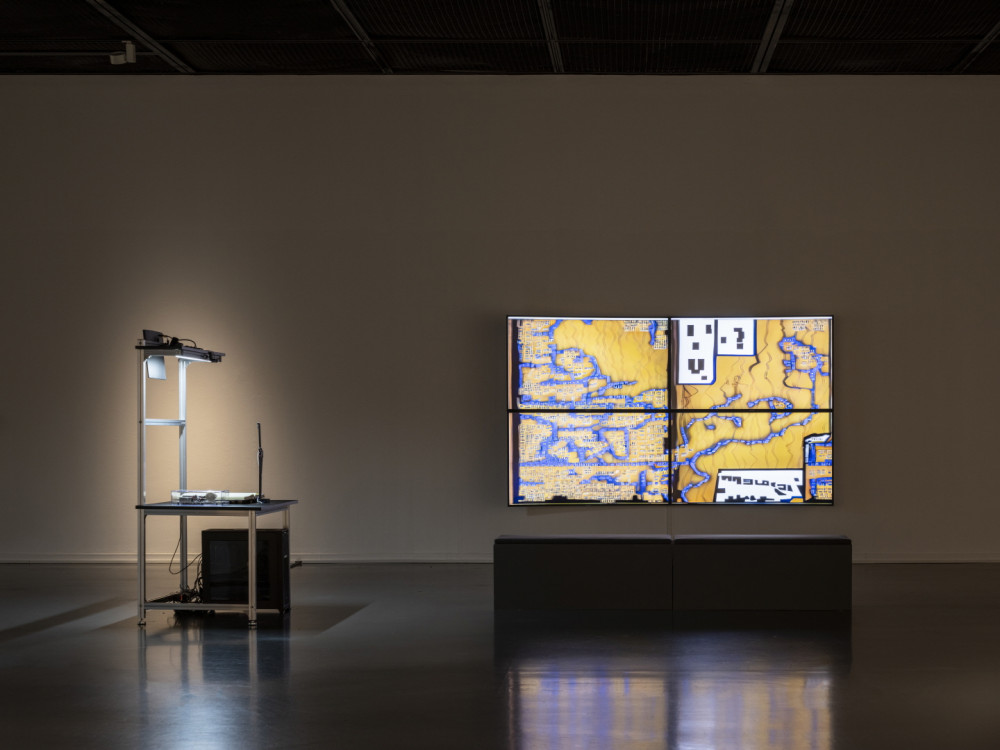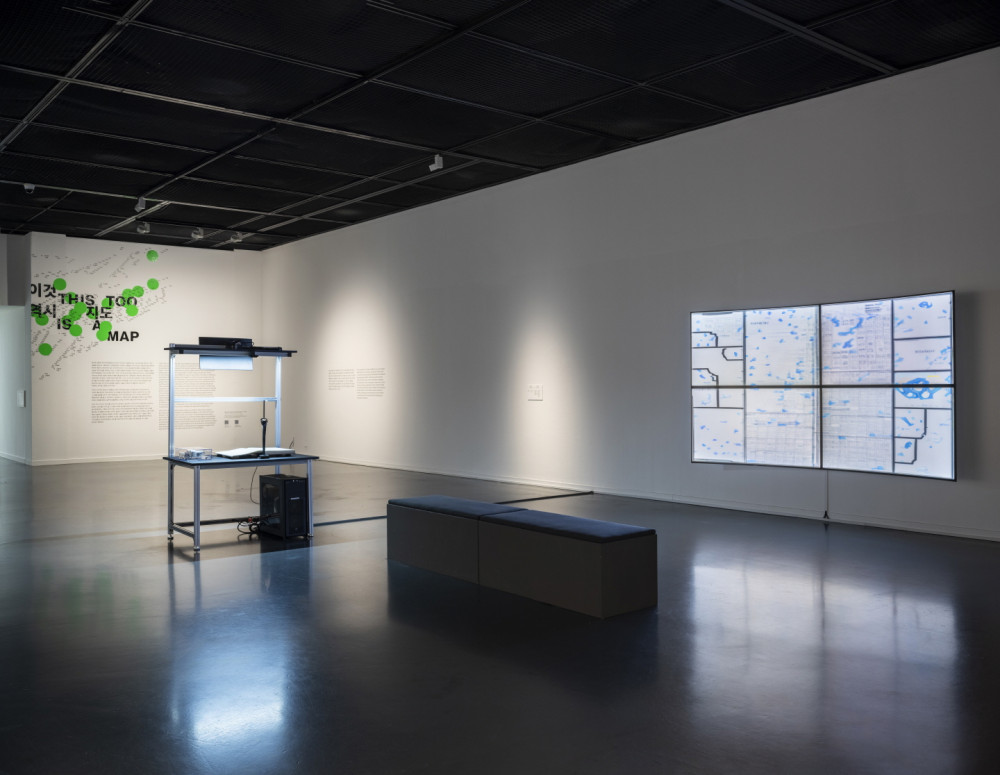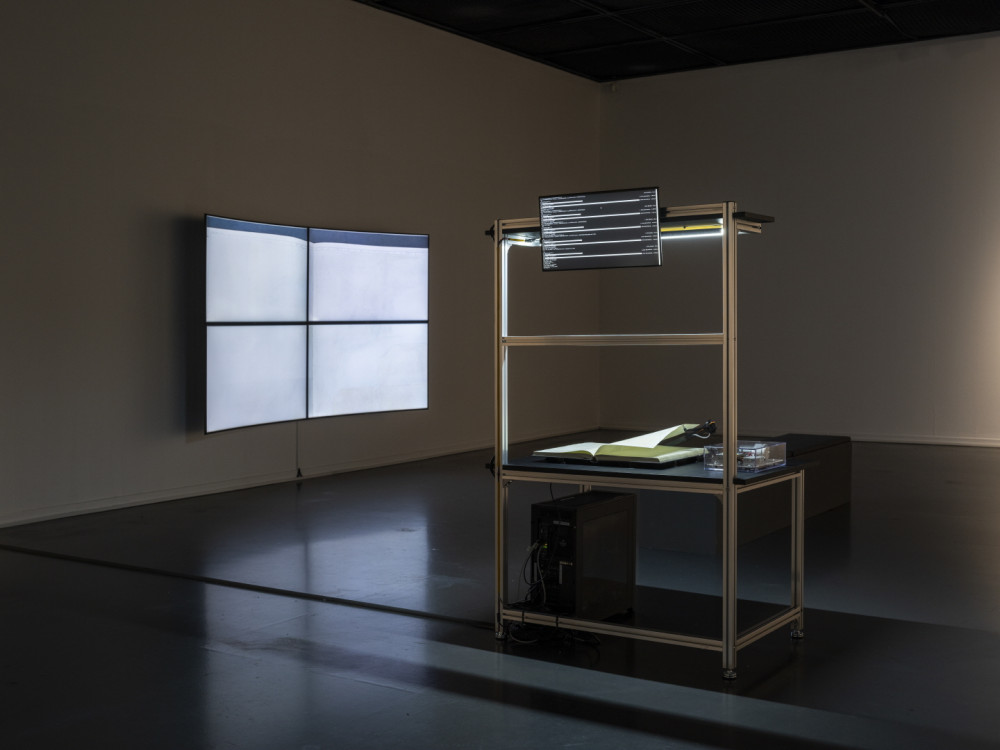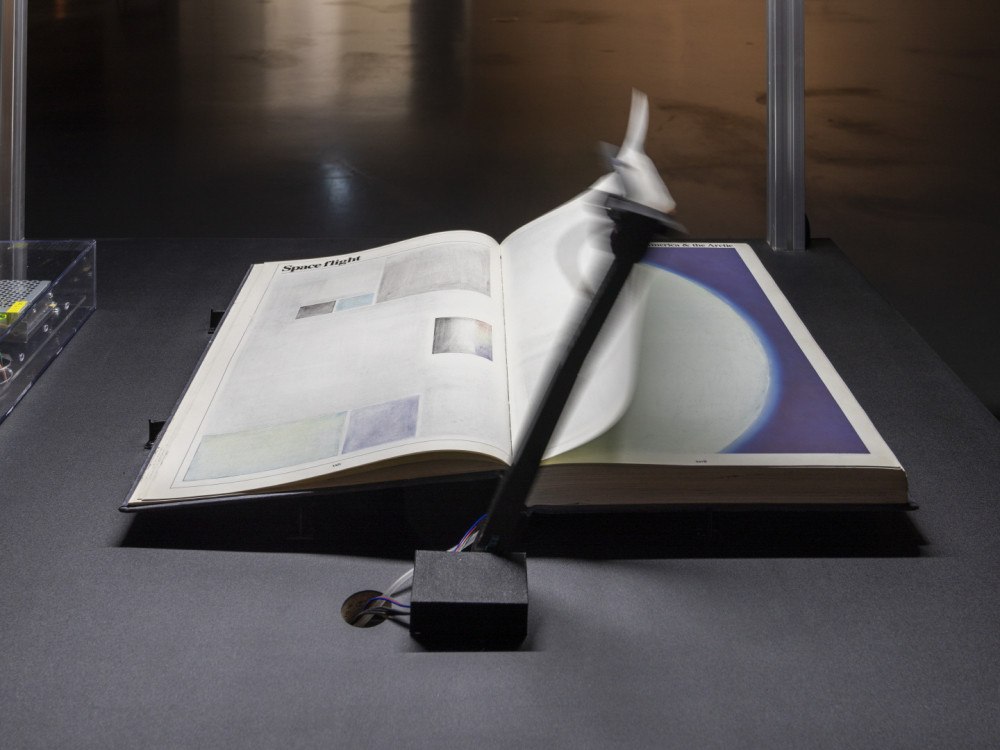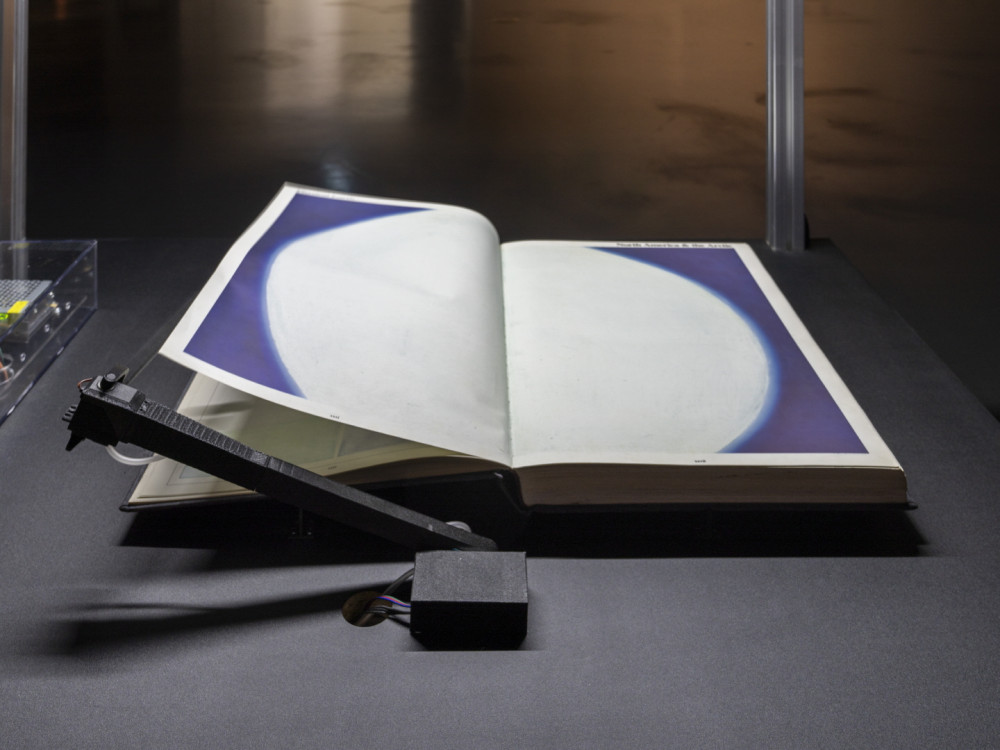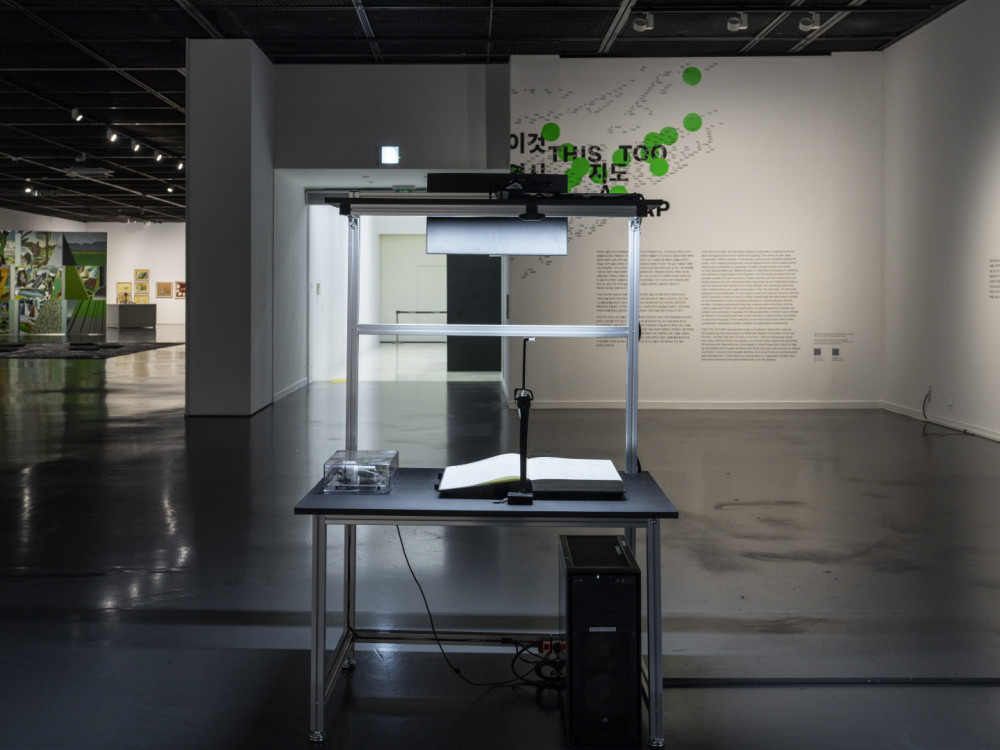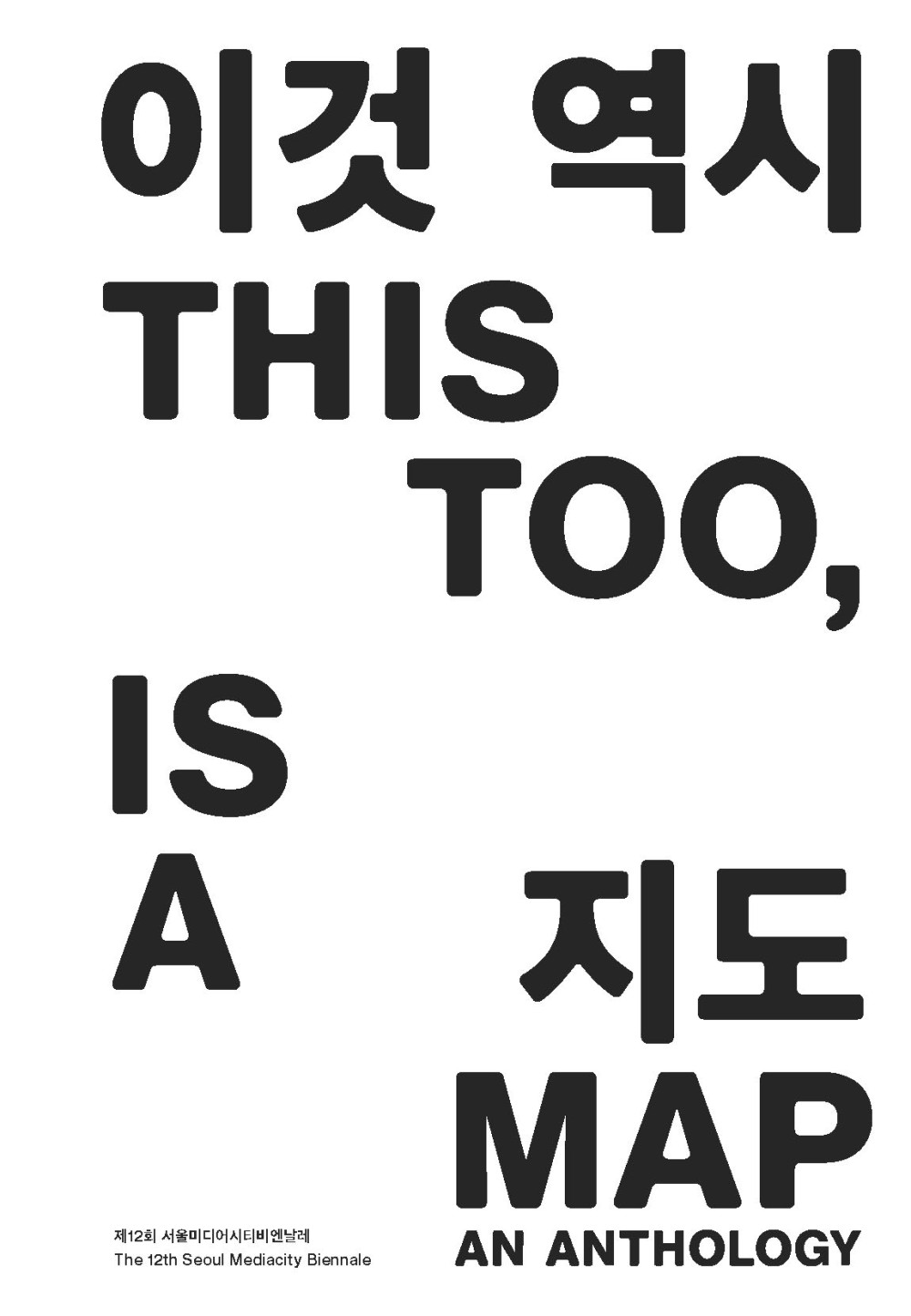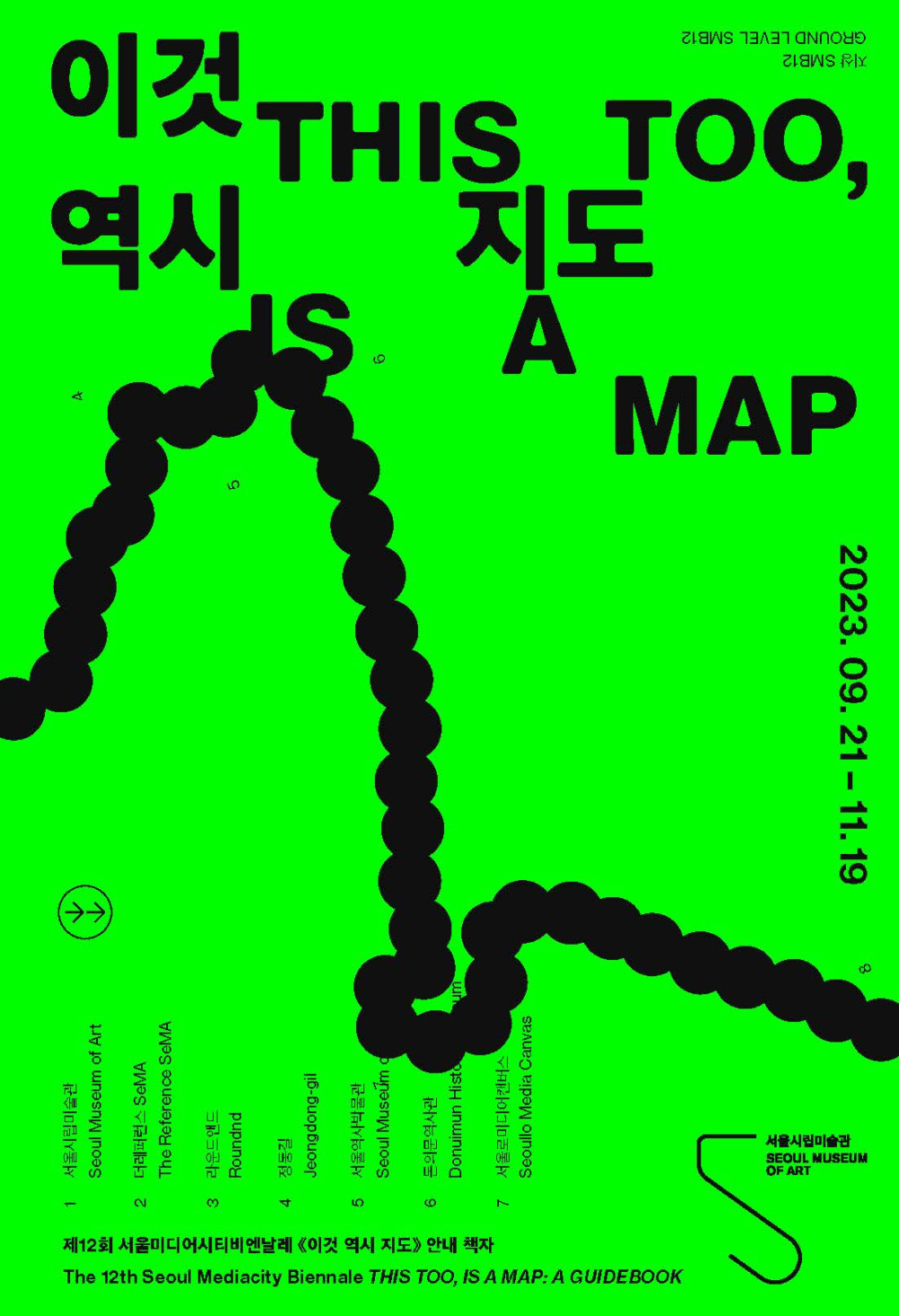
Through sculpture, installation, public interventions, social interactions, and data development and manipulation, Agustina Woodgate’s practice foregrounds research and processes that reveal and seek to change the relationships between infrastructure, information technologies, and the power systems that configure daily life. The New Times Atlas of the World takes the artist’s 2012 work The Times Atlas of the World as its point of departure to reimagine notions of mapping and technology. The original work comprises a 550page atlas in which the maps and indexes have been sanded down, thereby erasing their cartographic representations of nationstates and borders, political markers, and landmarks. By reshaping the arbitrary demarcations of colonial mappings into an abstract and muted visual field, Woodgate proposes an unlearning of Western geography that facilitates alternative mapping experiences and explorations. New additions of a mechanical page flipper and automated scanner continuously scan the book from cover to cover throughout the exhibition period, further highlighting the role of maps as tools and contemporary technologies as agents in the distribution and imagination of the landscape. As an image of an erased map is scanned, a script activates to interpret its structure, extending into a hidden layer of the neural network responsible for image creation. This hidden layer, molded through deep learning on an extensive dataset, is continuously transformed by the script, in a way that echoes the sanding of the physical map, eroding and reshaping the virtual representations. These changes reflect not only physical geography but also human understanding of space, boundaries, and divisions. This system reverseengineers the operation done by hand in 2012. It renders a new image of the world that is no longer an object of colonial expansion, but a combination of artistic imagination and neural net learning, an interplay between tangible geography and the territory of abstract concepts.
